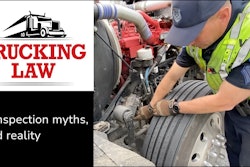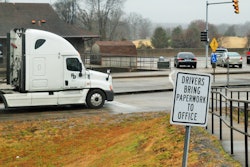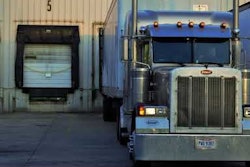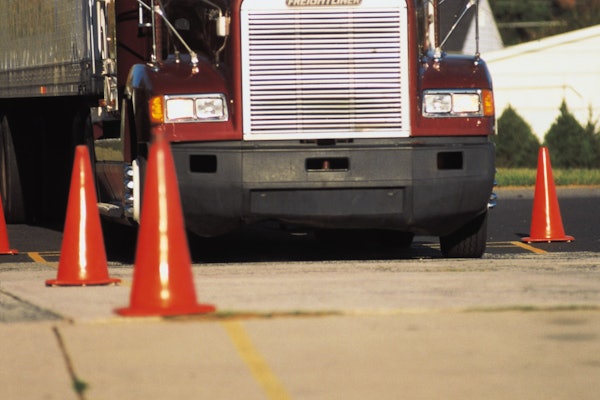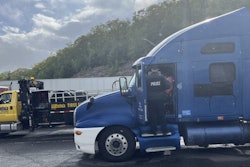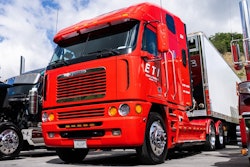Trucking has seen an increase over the better part of the last decade in autonomous truck technology, dating back to 2015 with truck makers' first road-legal autonomous truck in the Freightliner Inspiration.
Today, numerous companies work to improve autonomous tech to supplement what truckers do, even take over entirely in some controlled environments. For trucks operating at a moderate level of autonomous control, though, a driver remains a necessity behind the wheel. A need for changing lanes, parking or other circumstances that require common sense and quick judgment -- the truck screams for help and turns control over to the driver. That driver needs the same level of experience as today’s owner-operators.
It’s thus as important as ever to resist the tendency to overlook repetitive tasks necessary for safe operation on-highway, or safety complacency. Execute more complete and accurate pre-trip inspections, document trip plans in detail, with pictures of the bills of lading, any hazmat documents and/or placards required, before and after being loaded. These are a but a few things that fall on your shoulders to maintain safely with your freight partners. Likewise safety’s cousin: compliance.

There are many developments yet to come before any of us see a truly safe network of completely autonomous vehicles. These developments are needed in regulations, highway infrastructure and integration of autonomous technology in other vehicles. Even as these things evolve, safety and the technology that aid them still will require a driver behind the wheel.
Safety: Your biggest responsibility, in practice
Every year, some 800 or more truck drivers die in highway accidents in the United States, thousands more are injured, and thousands of citizens die or are injured in accidents involving a truck.
Avoid becoming part of those statistics by learning safe driving techniques and making them the foundation of how you operate.
Parking and backing. Most minor accidents occur when a driver is parking or backing, so even at low speeds it’s no time to become complacent. Never begin backing before first walking to the rear and looking all around, including up and down, for obstructions. Never rely solely on the opinion of spotters, especially at truck stops.
Keep your distance. A general rule of thumb for following distance is giving yourself 100 feet for every 10 miles per hour. A simple “cheat” to nail down following distance is to find a large, open area where you can walk off about 700 feet in front of your truck and place a cone there. Then place a small sticker on your windshield that corresponds with your sight line to the cone. Use that sticker as a reference point.
Deadly distractions. It is illegal to talk on a handheld phone or to text while operating a commercial motor vehicle in interstate commerce. That said, even the best drivers find that their attention can be diverted easily. Reading a map, talking on a CB, listening to music, daydreaming or picking something up from the floor are all distractions. Stay aware of the fact to avoid the worst happening.
The motoring public. Truck drivers are expected to drive safely and predictably, and the vast majority do. On the other hand, four-wheelers often drive in an unpredictable fashion, especially when they are near trucks. Their poor driving may display ignorance of your vehicle’s limitations, their own impatience or other conditions. Recognize inexperience when you see it, and use extra care.
Special loads. Certain types of hauling, such as with tankers and flatbeds, require even more training and care to operate safely. Tankers carry liquids that may be flammable or toxic. In certain circumstances, these liquids can push the vehicle in unexpected directions just when it needs to be stable and predictable. Flatbed cargo can become dislodged or, in a sudden stop, come loose and be projected toward the driver or others.
Load securement. Making sure your load is secure, particularly if you’re pulling a flatbed, is important for your safety, as well as other motorists. One accountability tool for operators with back-office support is to text a picture of a secured load to the office before the owner-operator leaves the shipper. Office staff can be a second set of eyes to examine securement, zooming in on tie-downs, looking for any potential problems.
Logs. Strict adherence to hours of service regulations is a good step toward safety -- and keeping out of trouble. With e-logs required for most drivers, it’s in some ways easier to avoid costly logbook mistakes that could put you out of service. In other ways, the new requirements have put new stresses on owner-operators to closely manage time.
Know your lmits. Don’t overestimate your ability, whether driving in substandard conditions or dealing with fatigue.
[Related: What truckers need to know about the updated out of service criteria]
Read next: 6 pre- and post-trip inspection myths, and reality



